Sometimes our emotions such as sadness and anger get ahold of us. We can choose to ignore these emotions but there is another option that can lead to a healthier emotional state.
My guest today Dr. Joan Rosenberg. She is a best-selling author, speaker, consultant, media host and a cutting-edge psychologist. As a TEDx speaker and member of the Association of Transformational Leaders, she has been recognized for her thought leadership and influence in personal development. She is a California-licensed psychologist and has been featured in the critically acclaimed documentaries I Am, The Miracle Mindset, Pursuing Happiness, and The Hidden Epidemic. Dr. Rosenberg has been seen on CNN’s American Morning, the OWN network and PBS. She also hosts The MindStream Podcast, an influential and thought-provoking iTunes podcast. And she is the author of the #1 Amazon bestseller ‘Ease Your Anxiety’ and of a forthcoming book describing her 90 Seconds approach to emotional strength and self-confidence.
On today’s podcast we discuss what true emotional well-being is, what gets in our way of achieving it, and practical steps to overcoming those obstacles so we can achieve optimal well-being and emotional mastery.
To learn more about Dr. Rosenberg, go to DrJoanRosenberg.com
You can also watch her TEDx talks:
Emotional Mastery: The Gifted Wisdom of Unpleasant Feelings:
Emotional Mastery: The Unexpected Riches of Grief (titled incorrectly on YouTube as Grief: A Pathway to Forgiveness):
TRANSCRIPTION:
Trevor: Hi, I’m Dr. Trevor Cates, welcome to the Spa Doctor podcast. On today’s podcast we’re talking about how to achieve emotional mastery. Sometimes our emotions such as sadness and anger get ahold of us. We can choose to ignore these emotions but there is another option that can lead to a healthier emotional state so I’ve invited my guest on today to talk about this.
My guest is Dr. Joan Rosenberg. She’s a best selling author, speaker, consultant, media host and a cutting-edge psychologist. As a TEDx speaker and a member of the Association of Transformational Leaders she’s been recognized for her thought leadership in influence and personal development. She’s a California licensed psychologist, and has been featured in the critically acclaimed documentaries I Am, the Miracle Mindset, Pursuing Happiness and The Hidden Epidemic.
Dr. Rosenberg has also been on CNN’s American Morning, The O Network, and PBS and she hosts The Mind Stream podcast, an influential and thought-provoking iTunes podcast. She’s also author of the number one Amazon best-seller, Ease your anxiety, and an upcoming book describing her 92nd approach to emotional strength and self-confidence.
On today’s podcast we discuss what is true emotional well-being? What gets in our way of achieving it, and practical steps to overcoming those obstacles so we can achieve optimal well-being and emotional mastery so please enjoy this interview with Joan.
Joan, it’s great to have you on my podcast!
Joan: It’s a trip for me to be on it, Trevor. I love when we get engaged in these conversations, so I’m really happy to be here.
Trevor: Good! We’re talking today about emotional health and well-being, something that we all need, right? Emotional mastery, and how we can achieve that so first Joan, I’d love to hear about what got you interested in this topic?
Joan: It started early in my career when I was working at UCLA with predominantly women who had eating disorders. It didn’t matter whether it was compulsive overeating or binging or anorexia.
I was totally engaged with them around that and certainly what I realized early on, and would talk to them also very early on, was that it wasn’t about food weight and appearance, and if they were dialed into anything that related to food weight and appearance then they were actually on the wrong problem.
What I did instead was tell them that it was really about their thoughts, feelings, needs and perceptions and their difficulty tolerating … Again, what was really true for them. Every time I said that to them 99% of them went yep, that’s true and then we could dial into the real problem. Around that time, I drew a diagram and that diagram has been the template for the rest of my work for the following 25 plus years.
The key thing for me around this, Trevor is that as hard and as difficult as what we think and how we think gets us in trouble, like negative self-talk, like I’m so stupid, that was really foolish, I’m so dumb, those kinds of things. I found that dealing with unpleasant feelings was harder so the journey has really been to try to understand two things.
One is what is it that makes it so difficult for us to deal with unpleasant feelings, and the second is how does all of that relate to self-confidence? That’s been really the thrust and the basis of my work the past two and a half decades or more.
Trevor: Absolutely, that’s great and its great awareness and that you’re able to help people in that way, bringing that awareness to people.
What is emotional health and well-being? There’s a lot of talk about this, what exactly is well-being, is there a definition for it?
Joan: Yes, there are many. There’s many ways to slice that answer, Trevor. The one that I like to use the most is from Dr. Dan Seagal. He talked about it in his book Brainstorm, which is about adolescents, also the qualities in adolescents that we want to see carried into adulthood. He actually uses the acronym ESSENCE as the basis of his definition.
ES is emotional Spark, think of that as a sense of vitality, an aliveness if you will, and the SE is social engagement so not only do we want someone to feel vitally alive and have that but we also want them to be able to be socially engaged, have friends and a close-knit community around them. The CE is creative exploration, that somebody has something that they want to pursue, that they’re totally into.
I have my letters reversed, the N is novelty. So it’s Emotional Spark, which is the vitality, Social Engagement, friends, novelty is the N so something new, I’m always learning something. And then the CE at the end is creative exploration where I have something meaningful to pursue.
When somebody has those qualities they’re probably living a life that has a good sense of well-being to it and is emotionally healthy.
Trevor: That totally makes sense and I was thinking you mentioned adolescents, I was thinking about how kids are much more, it seems like it’s easier for them to express themselves, to not hold back, to just be who they are and what happens to us, what happens to us that we lose that?
Joan: They pursue that, when they’re less engaged in judgment around us. If we get totally caught up in, I want you to hear how I say this, in what we think other people think. It’s not getting caught up in what other people are thinking, it’s actually getting caught up in what we think other people are thinking about us. As soon as we get lost in that, and that nuance is important, as soon as we get lost in that then we start to shut down and go, “Oh well, what if they laugh at me over there?” Or. “They’re going to ridicule me over here.” Or whatever it might be, we then start to close in on ourselves and narrow what we do as opposed to continue to be expressive in a way that we watch adolescents be expressive.
Trevor: That makes a lot of sense. I think there are two things that there is that we have a fear of what other people will think and then also that we assume that we know what other people think.
Joan: Right, well that’s, yes, go ahead.
Trevor: I just think it’s funny because I think a lot of times we automatically, and I’m going to stretch here maybe a little bit and say I think women are a little bit more likely to do this, the assuming of okay well they’re thinking this and that means this. I hear a lot of my girlfriends do that and I catch myself doing it too, more than my guy friends so I’m just curious if you’ve found that to be true.
Joan: Absolutely. I actually wrote quite a bit on this topic and I call it how to stop worrying about what other people think of you. What I will typically do is walk people through a series of questions around this. I do agree that women do it more than men. Men do it but women do it way more, at least in my observation. The key here is to start to think, when I’m talking about what people are thinking about you, that’s the first thing to kind of get rid of. It’s not what other people are thinking about you, it’s what you think other people are thinking about you and if you can get that nuance in and of itself it’s going to cut a lot of people out.
It’s like I will usually ask questions like what percentage of the time do you think, do you think other people are thinking about you? Somebody might say it’s kind of high, it’s actually very very low. Again, I also make that distinction that I started with a moment ago and then what I will do is ask, what percent of the time do you think they’re thinking the exact thought you think they’re thinking about you? That should go really next to zero. Once you get that you can start to move away from it.
The other things I talk about with this is not only is it often a projection, meaning we’re putting our thinking into somebody else’s head but it is also, I think, at its core a distraction of feeling vulnerable. The thing that I will try to get, once I’ve walked somebody through that sequence what I will try to get them to hook onto is any time you shift that kind of thinking just recognize that you’re feeling vulnerable and stay present to the feeling of being vulnerable like you can get hurt and then go about your business, go do what you wanted to do because that’s really what it is. It’s a though hijack of unpleasant feelings.
Trevor: Yeah, so our thoughts get in the way of emotional well-being.
Joan: Absolutely, yes.
Trevor: What else tends to get in the way?
Joan: Well, again, I think, there’s so many different things to get involved here but I think it’s what we think, so we can think negative thoughts and get lost in that and that alone, that will trip us off our balance, just totally destabilizes us or unsettles us. Then it’s how we think what we think. The way I think about that is that those are patterns of thinking. For instance, we magnify little things that are bad or we minimize the good stuff coming our way. Those are what I would call patterns, the cognitive behavioral people would call them either faulty thinking or cognitive distortions if we want to put the more psychologically jargonish word around it.
It’s that we get into these patterns so not only do we think bad, the what we think then we get lost in the patterns of thinking. All of that, again, think of all of that as being, if I’m in the middle of a spider web on each concentric circle that that spider does, think of that as another pattern of thinking and all it does is lead us to more and more, the smaller self and actually a more depressed self. What we think, how we think it and the ways we choose to behave in a world.
The other one that to me is so central to everything I do is how we experience and move through and express our unpleasant feelings because I think the experience of unpleasant feelings and the expression of unpleasant feelings is so important. I’m not just dialed into unpleasantness but that’s what I watch getting away.
Trevor: I think a lot of people take unpleasant feelings, the way they deal with them is just to distract themselves, completely avoid them and think that they’re just going to go away.
Joan: We would love, everyone of us would probably love to avoid that whole aspect of our life except unpleasant feelings, and again I make the distinction, they’re not bd or negative, they were actually evolutionary for us, there’s a reason that they exist and they exist because they were there to protect us. We got angry for certain reasons, we get sad for certain reasons, we get disappointed and most of that is to be away from that source, don’t go near the thing that’s hurting you.
The unpleasant feelings are actually very, very protective and until we learn that they have a valuable place in our life then at that point we’ll start to embrace them.
Trevor: It seems like awareness is the first part of all this, that you approach but you do have a really successful and unique approach in working with people so can you tell us more about how you do that so that we can start to work on some of this too on ourselves?
Joan: Absolutely. It is simple. Some people will say it’s simple but not easy but let’s call it simple and easy and then we can go into it that way. It was, again, something that happened over time but I call it, the formula in essence which some call the Rosenberg reset, not my name for it but is in essence one choice, eight feelings, 90 seconds. It’s super easy to remember. The one choice that I want people to make is to stay as open and wiling and comfortable with, if you will, their moment to moment experience. It’s being aware of and staying in touch with as much of your moment to moment experience as possible. That’s the one choice. Straightforward, so what that means is awareness, not avoidance. That’s the easy [inaudible 00:15:08] remember those things.
The second is to understand that all one has to really be able to manage are those eight unpleasant feelings. The feelings are sadness, shame, helplessness, anger, vulnerability, embarrassment, disappointment and frustration, just those eight. People are going to go okay, why those eight, and is it all eight at once? No, let’s answer the questions first, no, it’s not all eight at one time, it’s as they come and a few of them can come together. The second is why those eight is because those eight feelings are the most common feeling results of things not working out the way we want.
If I want to go pursue something it could be calling up a friend, somebody I’ve never met before or had just met and I want to build a friendship but I feel too vulnerable and I’m afraid that they’re going to say no to me and then again, what am I afraid of? I’m afraid of the disappointment and so I won’t take the action because I’m afraid of the disappointment. It’s just the most, in my mind those are the most common feeling reactions to things not working out the way we want so that’s why those eight.
The third part of it is the 90 second piece. For me, Trevor, everything kind of comes together around this one point. Again, I struggled, as I mentioned earlier to really understand or wrestled with understanding why unpleasant feelings got in the way. When I started to be aware of, it’s actually two or three things, again some of it coming out of Dr. Dan Seagal’s work and that in essence our body [inaudible 00:17:15] our brain so we’re like a brain on two feet. If we can start to see ourselves that way then everything that happens in the body proper, neck below is actually part of our brain function and that’s because our … Dr. Seagal looks a the brain as the brain itself plus the spinal cord running down the body so where our nervous system is.
Understand that our body’s our brain, that’s one piece. I hope I’m not being too sciencie here. Okay, and then the second is that something that Dr. Gill [inaudible 00:17:57] Taylor talked about in her book and her TED talk, My stroke of insight. She, neuroscientist who had a stroke in her left hemisphere which is where all the sciencie stuff we think typically resides. She had her awareness and her right hemisphere which is really feeling space, all the other kinds of things that aren’t language and logical and linear.
She was able to notice that when a feeling fired off from the brain, there’s a rush of biochemicals or neuro hormones, whatever we want to call them that rush through the body. When those neuro hormones rush through the body then they activate bodily sensations and it’s those bodily sensations that help us know what we’re feeling. Think of a sinking feeling in your stomach or the butterfly feeling that sometimes people describe with anxiety or again, when you get hot, when you get angry. It doesn’t matter what the sensation is is that we … It activates those bodily sensations and then those same biochemicals, if you will, flush out of the body and then those bodily sensations subside.
It’s the bodily sensations that help us, those physical bodily sensations that help us know what we’re feeling emotionally and I realized that was the key. It’s not that we don’t want to feel the whole range of what we feel, we do. We don’t want to feel the bodily sensations that help us know what we’re feeling emotionally. She said the whole rush and flush process, 90 seconds so that’s the 90 seconds. It’s the one choice to stay fully aware and in touch with as much of your moment to moment experience as possible and then being able to ride one or more 90 second waves of one or more of eight unpleasant feelings. Then you can go pursue whatever you want and you can stay fully in touch with those feelings.
Trevor: That makes sense. It seems like when you bring awareness to your physical body and make that connection between what you’re actually feeling what you might just say is in your head but actually feel it in your body that really helps us take it out of our head so much, make it real.
Joan: Totally, yes, it does make it very, very real. It’s very interesting, one of my roles is as a professor and I teach graduate students how to do psychotherapy but it’s, to your point, I ask them to notice the difference between when they, if I were to ask them a question, how do you feel, how do you feel is actually a thought question. You have to go to your head to figure out what your body is doing as opposed to just reflecting it back which actually gets us into the body experience so it was like, oh, that must have left you feeling kind of sad or bummed or disappointed, it actually put you right into your body. Yes, to your point, it’s very very important for us to have way more body awareness if we actually want to be able to handle our feelings much better.
Trevor: Once people are aware of the physical feeling in their body, do you feel like that just helps people move past it? As you were saying you have mastery over it because you have that physical connection with it or is there another step that people have to do beyond that?
Joan: It’s a great question. The awareness is the first part, the staying present to the feeling is the second part. My sense is that if we don’t stay present to the feeling and actually go through it, it’s like to feel the bummed outness, to feel the disappointment, whatever it is then we don’t get the insight that comes with moving through the feeling. I want people to stay present to what they’re experiencing long enough that they actually then are able to access the insight that can come then it’s taking the insight and doing one of three things with it. It’s either making a decision with it, it’s expressing yourself or it’s taking an action.
Trevor: Can you give me an example of insight that somebody might have if they go through this process?
Joan: Sure. Let’s think of, relationship challenges are probably the most common experience that people have and let’s say you’re dating somebody and that person says they’re doing to call and doesn’t or they say they’re going to do X and they don’t and that now that starts to be a repeated pattern and there’s a part of you that’s going I don’t trust this person, I don’t, whatever, but you don’t want to see it that way so you keep on avoiding that and pushing it aside and going oh, but I really love him or I really love her or whatever it might be and you keep dismissing the thing that you actually have awareness about.
Then it happens again and it’s just enough where you go, oh, wait a minute, I actually really don’t like this, in fact I’m actually pretty angry about it and so then what ends up happening is you take that anger and you go, I’ve got a decision to make here so what am I going to do, am I just going to cut this guy off or this woman off or am I going to say something, no, it’s important enough to me to say something so now you’re making decision with the information, you’re taking the anger that you’re allowing yourself to experience, you’re making decisions with the information and then the next step maybe to action which would be to either express yourself and go, hey bud or hey so and so, I really don’t like what’s happening here to effect change or you go, I’m done, I’m out.
You start to make use of the unpleasantness as knowledge if you will and so that’s how I would say the insight can then move into those three things.
Trevor: That’s great. I think a lot of times we, like you’re saying, you can ignore it, that’s one option but it tends, especially in relationships you just get more and more bitter or just dwell on it more or get more in this well, he must be having an affair or all these different things that can possibly go through your head, you’re making up stories instead of just saying okay, what am I going to do about this, I can’t just keep it in my head, I’ve got to move past it because it’s not a fun place to be. A lot of times you have the relationship and maybe the person actually has a really good excuse and then also it opens up a dialogue of say, oh, I didn’t realize that bothered you, let me communicate better with you about when my plans change or whatever that is and it opens up a dialogue or the person just says tough, that’s just how I am and then you’re like, okay, well I’m out.
Joan: Yeah, exactly but it takes us staying present to that unpleasantness to be able to access the rest of the information that we then need to act on or can use to act on. That’s how I would say it’s like then taking the information to apply it.
Trevor: Yeah, absolutely. It gets interesting, I want to go back to the different emotions. Can you name the eight ones again?
Joan: Hmm. Sadness, shame, helplessness, anger, vulnerability, embarrassment, disappointment and frustration.
Trevor: Now I noticed that you don’t have anxiety in that list of emotions.
Joan: I do not.
Trevor: You and I have talked about anxiety a little bit. I actually read your anxiety book. What’s the full title?
Joan: It’s called Ease your anxiety and it’s how to build confidence, emotional strength and self-esteem. I can’t even remember the ending title but confidence, emotional strength and inner peace, inner peace, that’s what it was.
Trevor: I actually, I took it with me, I went with my father to a doctor appointment, the doctor’s appointment that he had, he had to have a procedure done and I knew we were going to be there for a few hours so I took it with me and actually read it out loud to him during the appointment and it was really interesting. It was really great to go through all the different points of that but I know you have a unique take on anxiety so share with everybody why you don’t have anxiety in that list.
Joan: Okay, it’s a great question, I love that you did that and I’m curious about the end result but the, I think of anxiety broadly speaking as a cover for the unpleasant feelings. Think of anxiety as being kind of a secondary reaction and I [inaudible 00:27:57] it out several different ways. The first one is that it’s unexperienced and unexpressed feeling. What I will watch off is that people will be feeling something like anger for instance, or sadness or disappointment, the big three and they don’t want to express it the person they’re feeling it towards or there’s something going on and rather than expressing it when they shut it down now they’re covering the unpleasant feeling. When they shut it down and don’t express it it has to show up as something else. The energy and those reactions don’t go nowhere so then they start to feel like the anxious feelings in our body.
You can think of it as unexperienced and unexpressed feeling. You can think of anxiety as a cover or a distraction from the eight unpleasant feelings. I tie this idea of the eight unpleasant feelings to the notion of being capable and resourceful, feeling capable, I’m sorry. I would say that when someone moves away from those unpleasant feelings and they feel anxious then they’re not feeling capable in the world. There’s many different ways for me to talk about it.
Trevor: It’s interesting because how many times do we say that? We say, I’m feeling anxious or you hear people say, oh, I’ve got so much anxiety about this, it’s something that we use a lot and generalized anxiety disorder is a diagnosis that therapists give pretty regularly but so what does that mean then?
Joan: It means that we have a lot of people who are dismissing their true feelings. I actually think there’s two diagnosis that I would challenge and I realize this is going to be me be a little provocative today but to your point about generalized anxiety I think that most mental health professionals don’t make the distinctions that I make and as a result we have those “disorders”. Frantically I think a lot of depression is … People get identified with depression and I think most of that, a great percentage of that, there’s no way for me to put numbers on it is actually people disconnected from their true selves or disconnected from their real feelings then if they were accessing those real feelings the depression would go away. The same is true for the anxiety, that if they were accessing their real feelings this generalized anxiety disorder would disappear.
The thing that I would invite people to do based on what you said is to ask themselves just a couple of questions and that is if you were to think that based on you watching this interview or this Skype conversation that I was in your head and I said well, if I took all the words for anxiety away from you what would you really be feeling? Dial your thinking into that question and let yourself really go to that place within yourself and not let yourself just call it anxiety, instead allow yourself to go deeper and see if you can identify and use one of the eight, one or more of the eight feelings, that’s all you have to do. Don’t make it complicated and watch what happens because I think people really know the truth.
Trevor: Yeah, absolutely. To go back to your book, me reading it to my dad, it was funny because it was the book I just had put in my suitcase because I knew I was going to be interviewing and I wanted to read some of your work and so I just grabbed it on my way to the doctor’s appointment, didn’t really think about the fact that this was a very relevant topic for him and so I asked my dad, how was that for reading it to you and he said well, it’s really interesting, it’s definitely a good distraction and we created some humor around it so it ended up working out really well.
The doctor thought it was really bizarre that I was doing this but it the way I reframed it, I would read just parts of it, I didn’t read the whole thing but I read parts of it and I said here are the really practical parts of it, let’s talk about breathing and awareness so some of the things that you talk about. I don’t want to give away all the things in your book because I think people should read it but is there anything you want to share from that book since I brought it up?
Joan: Really the essence of it is that if people get the book what they should understand is when I reference the unpleasant feelings in the book I’m actually talking about those eight that I’ve named here and the other is really, if you want to cut it to the core so use the question if I were to no longer use the word anxiety and anything else that smacks of anxiety like apprehensive or scared or whatever then or frightened, because you can’t use those words either then it [inaudible 00:33:51] what they’re really feeling then stay present to the feeling, one choice, eight feelings, 90 seconds and then watch what happens because more information is going to come to you and you’re going to end up feeling so much more comfortable in your own skin and it’s like that’s what we all want. The more we stay true to what’s really going on for us the happier and healthier we become, period, end of story.
Trevor: Right, and that’s emotional mastery, right?
Joan: That is emotional mastery, yeah.
Trevor: Well Joan it’s been such a pleasure interviewing you today. Tell people how they can find you and we’ll be sure to share whatever links you share with us, we’ll be sure to share them on the website.
Joan: Sure, the easiest and most straightforward is doctorjoanrossenberg.com and it’s all one word and then I’m on Twitter with the same handle, Facebook I believe the same handle, LinkedIn, probably the same handle, it might be different on LinkedIn and then people, there’s two TED talks, there’s a TED talk that centers around this very topic and there’s a second TED talk that’s centered around what should be called the unexpected riches of grief which is something I call disguised grief so people can take a look at those on, both of those are on YouTube.
If people want there’s, on my website there’s a place for them to access some smaller portion of the book, the Ease your anxiety book, there’s a kind of an opt in if you will.
Trevor: Where can people get your book? See you have multiple [inaudible 00:35:31]
Joan: I think Amazon is probably the easiest.
Trevor: Okay, great, fantastic. Alright, thank you so much Joan, I really appreciate it.
Joan: You bet, thanks so much Trevor.
Trevor: I hope you enjoyed this interview today with Dr. Joan Rosenberg. To learn more about Dr. Rosenberg you can go to the spadoctor.com, go to the podcast page with her interview and you’ll find all the information and links there and while you’re there I invite you to join the Spa Doctor community. You can also subscribe to the podcast on iTunes so you don’t miss any upcoming shows. If you haven’t done so already I recommend that you get your customized skin report at theskinquiz.com. It’s free, takes just a few moments and you’ll find out what messages your skin is trying to tell you about your health and what you can do about it. Just go to theskinquiz.com.
Also I invite you to join me on social media on Facebook, Pinterest, Twitter, Instagram and YouTube and join the conversation with us and I’ll see you next time on the Spa Doctor podcast.
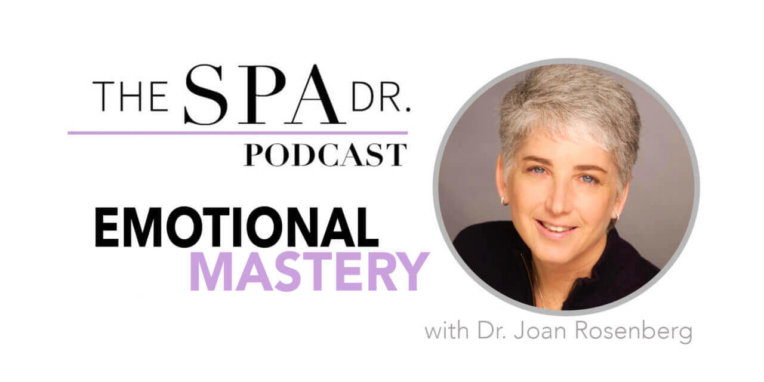
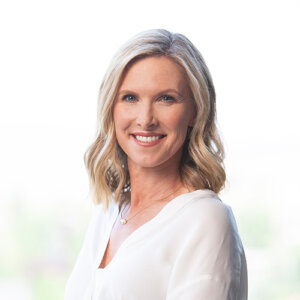
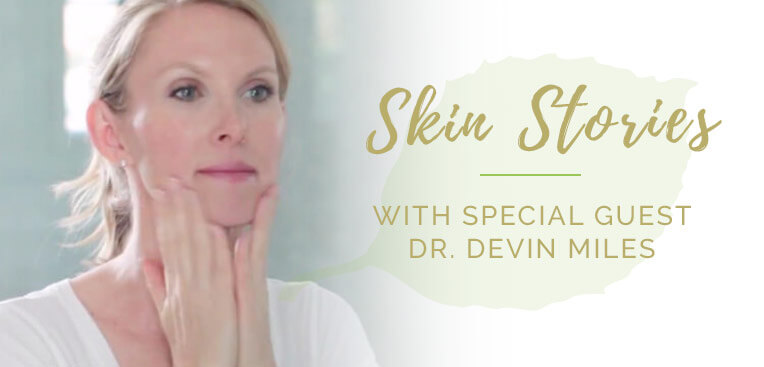
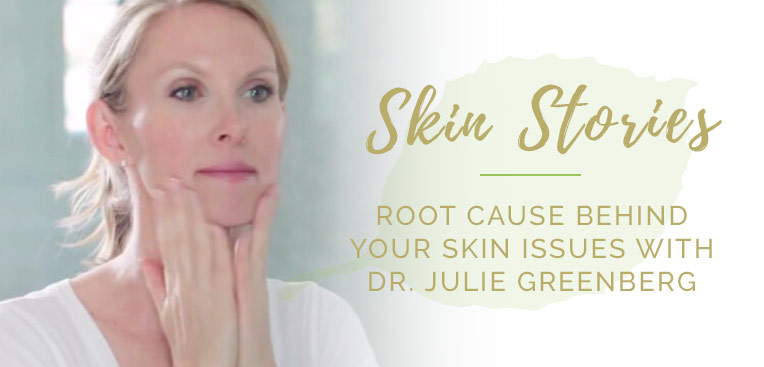


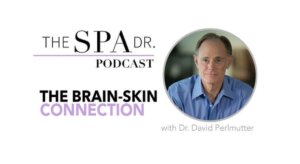

Reader Interactions